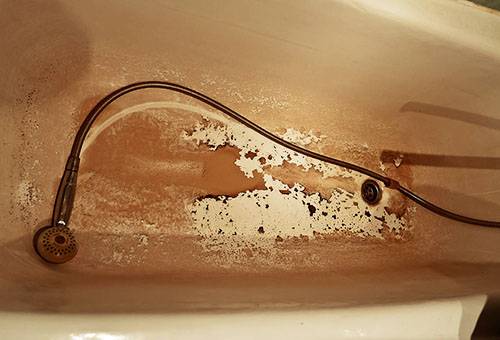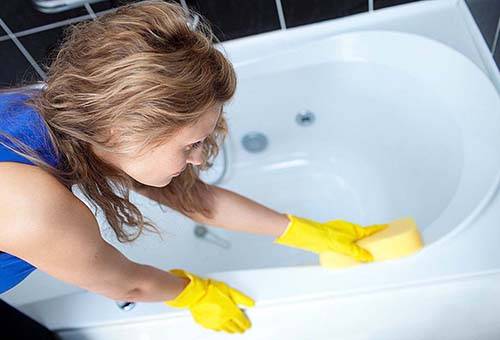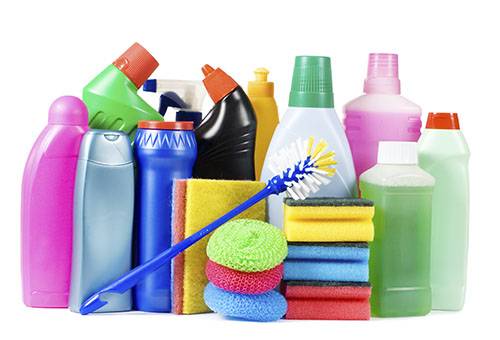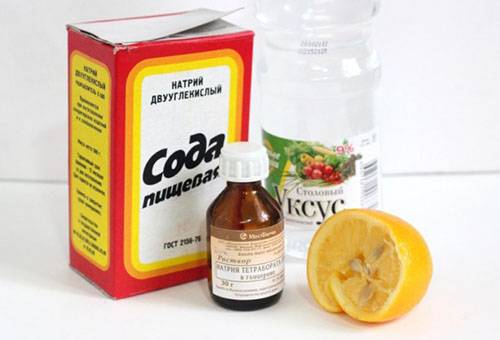How to quickly and easily whiten a bathtub at home?
Sooner or later, every housewife has to face a difficult everyday question: how to whiten a bathroom at home? The sight of sparkling new snow-white sanitary ware in the bathroom is certainly very pleasant, instantly refreshes the design of the room and gives it an almost festive look. However, this whiteness, unfortunately, is so short-lived! After some time, you and I notice that the inner coating of the bathtub has acquired a suspicious grayish or yellow tint and every scratch has become visible on it, and in some places rusty spots have even bloomed. All this definitely means that the time has come for spring cleaning with the use of powerful economic artillery.

“How does it even get dirty, they wash in it all the time?!”
For the vast majority of people, daily bathroom care means “don’t forget to rinse yourself after a shower or wash.” If the water flowing from the tap were perfectly clean, this could, in principle, be enough - but in fact it is the main factor in the contamination of the bathtub. You've probably noticed that yellow plaque and rust form especially readily and quickly in the bathtub if the water stagnates in a puddle at the bottom or there are leaks in the mixer.
In order for cold water to meet drinking water standards, the utilities responsible for supplying it mercilessly disinfect it, killing bacteria, and at the same time its chemical composition becomes much more aggressive than H2O.And there is no need to talk about the composition of hot water, which is not originally intended for drinking and is essentially technical. In addition, before flowing from your tap, water travels tens of kilometers of not very new pipes, the inner walls of which are not ideally clean. As a result, the question of how to make a bath snow-white and remove plaque arises before housewives again and again.
So how can you clean your bathtub white at home?
There are many ways to whiten a bathtub at home, and choosing the most suitable one for you depends on two factors: the degree of contamination of the plumbing and the material from which the bathtub is made.
The most common materials in the affordable price range from which bathtubs are made today are steel, cast iron and acrylic. The enamel coating of metal tanks can withstand quite a serious attack - both chemical and mechanical, although you should not be too zealous. But acrylic scratches very easily and therefore does not tolerate abrasive cleaning at all, so powders and brushing are not suitable for it - to clean an acrylic bathtub, it should be treated only with a soft cloth or sponge, and the plaque remover should have the consistency of a homogeneous paste or gel.
Store funds
A metal bathtub can be cleaned with almost any household chemicals that can be found at your local hardware store. Surely among them will be Domestos, Cillit, Comet, Cif, Sanox and other popular brands, each of which is capable of cleaning the surface and providing high-quality whitening.
The techniques for working with all these powders, gels and sprays are the same:
- apply the products strictly according to the instructions with which they are supplied;
- do not overexpose on the surface of the bath;
- wipe the enamel without pressing hard to avoid mechanical damage;
- do not use too often (more than once a week);
- do not rinse with hot water - only warm or cold, so as not to get chemical burns from the rising steam;
- Be sure to wear rubber gloves before work; it is advisable to also take care of protecting your eyes and lungs.
It is recommended not to let it get really dirty - it is much easier to wash off light yellow or gray deposits, although in this case you will undoubtedly have to do this work more often.
To remove yellowness from an acrylic bathtub, you should use special products marked accordingly. In the mass market segment, suitable products are produced, for example, under the brands Sun Klin, Triton, RAVAK.
Folk home remedies
I am pleased to share with you a very simple way to clean your bathtub white without leaving your apartment. Tools that will probably be found in the arsenal of any housewife who is familiar with the basics of baking and food preservation will help. To rid your plumbing of contaminants, you can use soda, vinegar or citric acid.
The easiest thing is to try to clean the plaque on the enamel with regular baking soda. It copes quite satisfactorily with minor stains - you need to apply a slurry of soda to a damp surface with a sponge, and after half an hour or an hour carefully rinse it off.
More persistent stains that have become embedded in the enamel and strong deposits cannot be treated with baking soda alone - you need a mixture of it with soda ash.Having combined these substances in a one to one proportion, you need to apply the resulting composition to the enamel, leave for half an hour, wipe with a sponge moistened with table vinegar, and after another half hour, rinse well with water.
Vinegar, however, can quite effectively remove rust and yellow plaque, even if it is not mixed with soda, especially when cast iron plumbing needs to be washed and bleached. You need to soak paper napkins with liquid, line the bath with them and leave for 3-5 hours, then remove everything and rinse the surface. Citric acid acts faster - two sachets per half liter of water can clean the bathtub in just 25 minutes.
Advice
If you need to treat an acrylic bath with the above products, they should be approximately half as concentrated, or the contact time of the product with the surface should be reduced.
Home remedies, as we see, are quite capable of solving the problem of how to clean a bathtub white, and at the same time they are affordable and relatively safe for the housewife in comparison with industrial ones.


